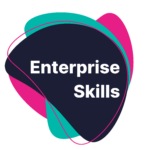Syllabus: SQA - Higher Course Spec Economics
Module: Economics of the Market
Lesson: The Economic Problem
Jump to Section:
Introduction
In the SQA Higher Economics course, “Economics of the Market” introduces students to the core economic issue of scarcity and choice. It forms a foundational pillar of the curriculum and sets the tone for analytical thinking across the rest of the qualification. This unit aligns tightly with SQA assessment criteria and gives students the vocabulary and structure to understand how economies, governments, and individuals make trade-offs. It’s the part of the course where abstract ideas become real, everyday challenges.
Key Concepts
In line with the SQA Higher Economics specification, students will learn to:
Define the basic economic problem as one of scarcity, where limited resources must meet unlimited wants.
Understand needs vs wants, and how this distinction underpins all economic activity.
Explore the concept of choice and how economic agents (consumers, producers, and governments) must prioritise.
Analyse opportunity cost through real and theoretical examples.
Identify the factors of production – land, labour, capital, and enterprise – and their roles in economic decisions.
Apply these concepts using production possibility diagrams (though not explicitly required by SQA, this is a helpful cross-board visual tool).
These concepts are deliberately introduced in accessible terms and are intended to support progression to more advanced topics such as market dynamics and national economic performance.
Real-World Relevance
The economic problem is not just theory. It’s what makes headlines. For instance:
During the UK cost-of-living crisis, households face daily decisions between heating and food – classic examples of scarcity and choice.
NHS funding decisions illustrate opportunity cost at government level: more spending on mental health might mean less for emergency services.
Businesses navigating rising input costs must decide whether to raise prices or absorb losses – economic choices with ripple effects.
Using real stories helps students connect textbook terms to their world: whether it’s understanding why concert tickets are limited or why food banks exist despite supermarket abundance.
How It’s Assessed
In the final SQA assessment, this content appears mainly in Paper 1, with a focus on knowledge and understanding of economic concepts and application to familiar scenarios. Students are expected to:
Accurately define key terms like scarcity, opportunity cost, and factors of production.
Apply concepts to case studies or short scenarios.
Use economic reasoning to justify choices or decisions.
Assessment command words typically include:
Define – Give a precise meaning.
Describe – Provide detail without explanation.
Explain – Give reasons for something.
Analyse – Break down and interpret.
Evaluate – Weigh pros and cons and make a judgment.
Teachers should ensure learners can move from simple definitions to real-world application and reasoning.
Enterprise Skills Integration
The economic problem is a brilliant entry point for enterprise education:
Decision-making: weighing opportunity costs is core to entrepreneurial thinking.
Problem-solving: students can explore resource allocation challenges using limited ‘budgets’.
Prioritisation: setting goals with constraints is a real-world business necessity.
A practical classroom activity could include a role-play budget simulation where students act as local councils deciding how to allocate limited funds across health, education, and housing.
These activities develop resilience, critical thinking, and negotiation – all vital skills in any career, not just economics.
Careers Links
This topic links directly to Gatsby Benchmark 4 and 5 – embedding careers learning in the curriculum and encounters with employers:
Economists, financial analysts, and policy advisors constantly evaluate opportunity cost and resource allocation.
Public sector roles, from NHS managers to civil servants, use these skills to make strategic decisions.
Entrepreneurs must navigate scarcity every day – deciding where to invest time, energy, and money.
Bringing in local business owners or council representatives can make this content come alive while showcasing career paths tied to decision-making and resource management.
Teaching Notes
Here’s what works:
Start with what they know. Use relatable dilemmas: “You’ve got £10 and want to go out. Do you choose cinema, takeaway, or save it?”
Use real data. Infographics on NHS spending or council budgets offer great discussion starters.
Visual tools. Even if not required, introduce production possibility frontiers (PPFs) to show choices graphically.
Group discussions. Prompt debates around “best use of resources” to spark critical thinking.
Common pitfalls:
Students often confuse needs and wants. Anchor definitions in tangible examples.
Opportunity cost can seem abstract. Make it visible through everyday choices.
Avoid heavy theory upfront – lead with lived experience, then layer in economic terms.
Extension idea: Challenge students to analyse opportunity cost in a high-stakes situation – like disaster relief or triage in hospitals. This bridges classroom content with ethical and logistical thinking.


